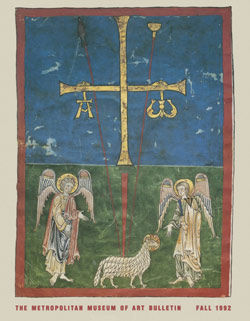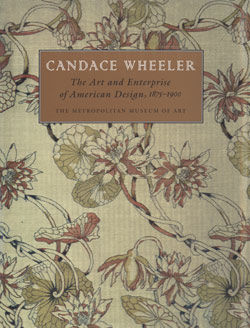Screen
Designed by Lockwood de Forest American
Ahmedabad Wood Carving Company
With its carved teak frame, vividly patterned plaited matting, and Japanese lacquer and mixed-metal finials, this unusual screen epitomizes the 1880s fascination with exotic styles and materials. The screen's designer, Lockwood de Forest, who was trained as a painter, did much to foster popular taste for such exoticism in decorative arts and architecture during the late nineteenth century. In 1881, with the ambition of reviving traditional methods of craftsmanship and indigenous designs, he established workshops in Ahmedabad, India, where carved woodwork was produced for use in American interiors and furniture. The workshops continued under his direction until 1907, when he turned over their management to Louis Comfort Tiffany. Over the years, de Forest amassed a sizeable collection of Indian, Tibetan, Chinese, and Persian objects, most of which were acquired by the Museum in 1915. While many of the items produced at the Ahmedabad Wood Carving Company were sold as stock items, others were custom made for a specific interior. This screen stood in the living room of Wawapek, the country house of Emily and Robert de Forest in Cold Spring, Long Island. (Robert, Lockwood’s older brother, was the president of The Metropolitan Museum of Art from 1913 to 1931). The screen’s multicolored matting complemented Emily’s collection of American Indian baskets, which was arranged on shelves in the room. With the Indian carving of its teak frame and its mixed-metal finials of Japanese sake cups, the screen exemplifies the tendency to blur distinctions among far-flung styles while creating "exotic" interiors.
Due to rights restrictions, this image cannot be enlarged, viewed at full screen, or downloaded.
This artwork is meant to be viewed from right to left. Scroll left to view more.





